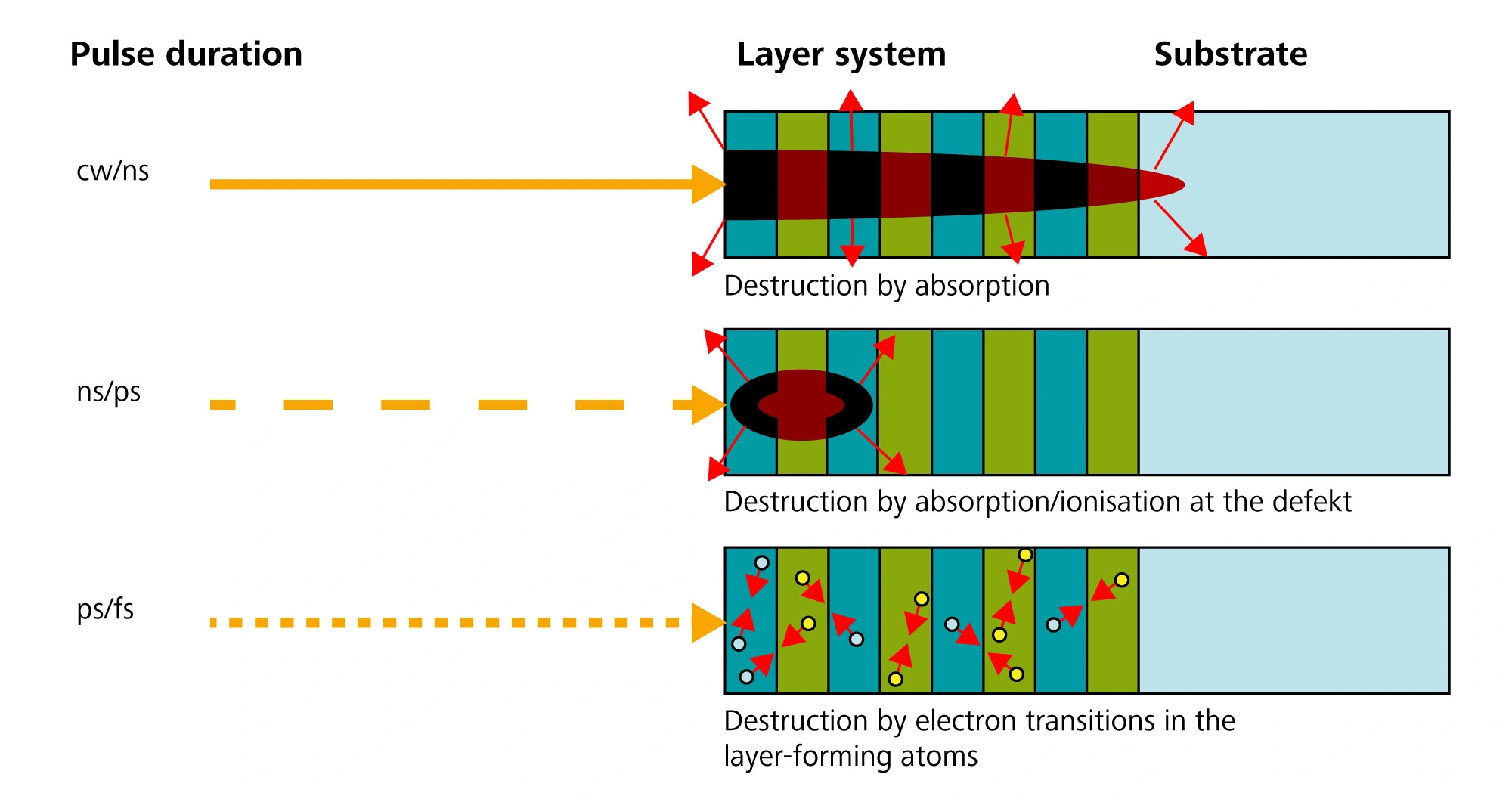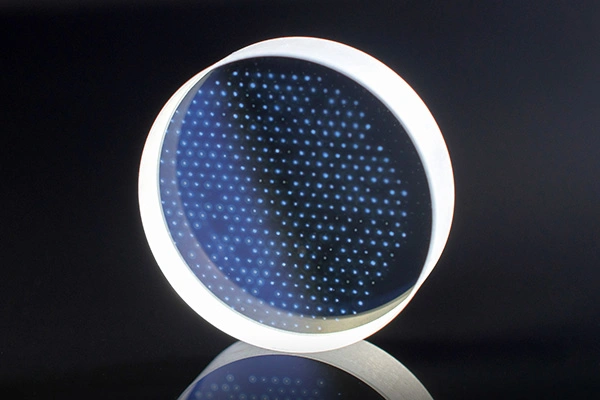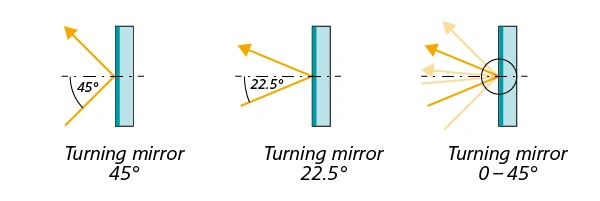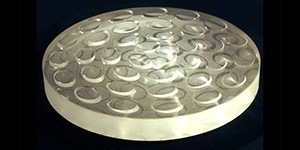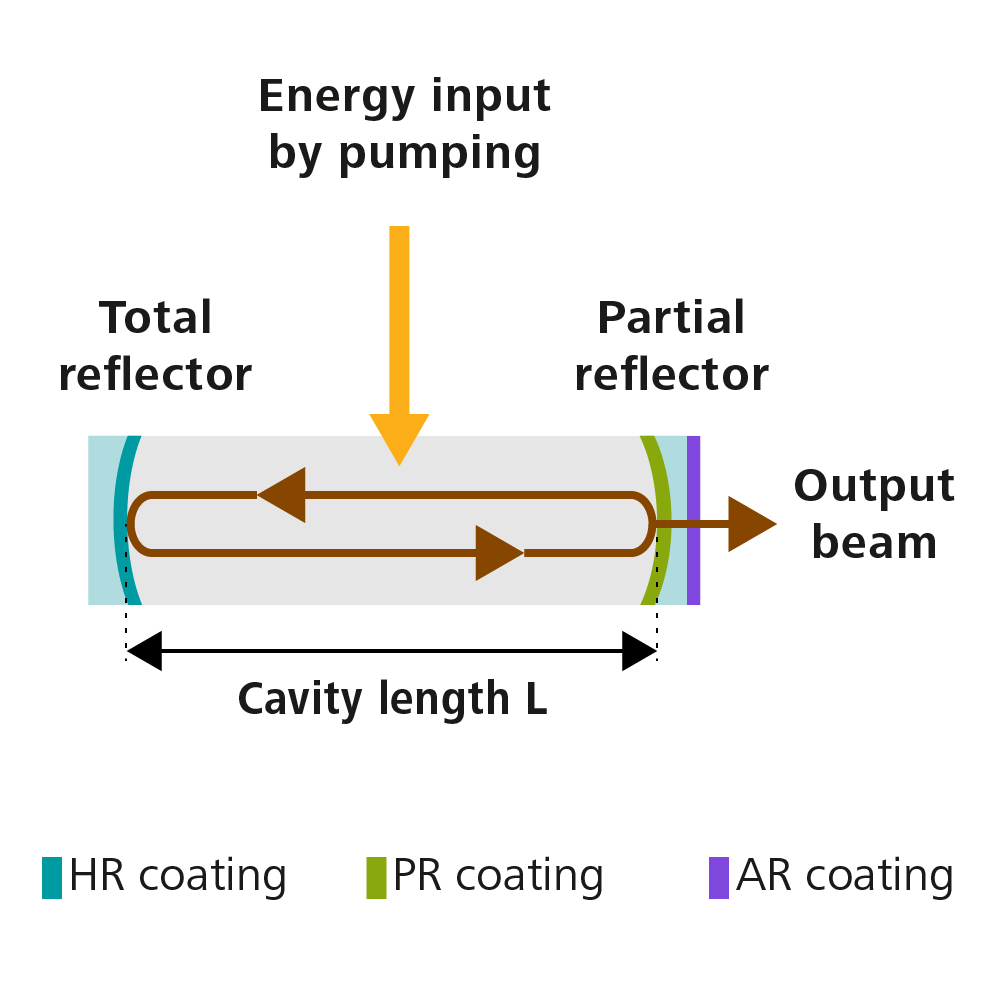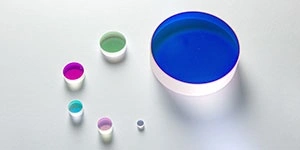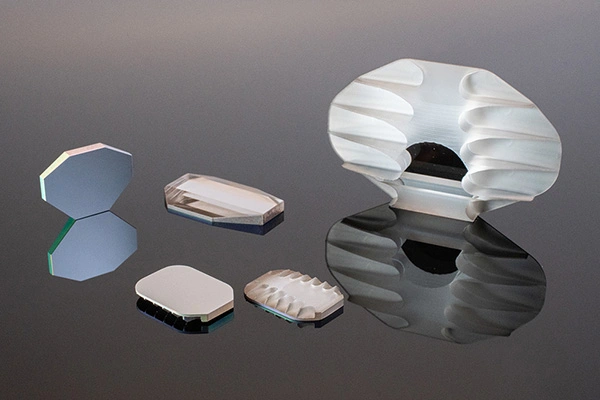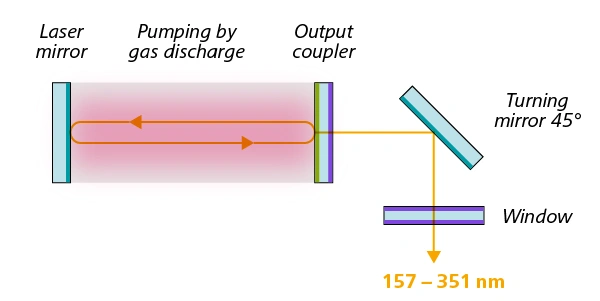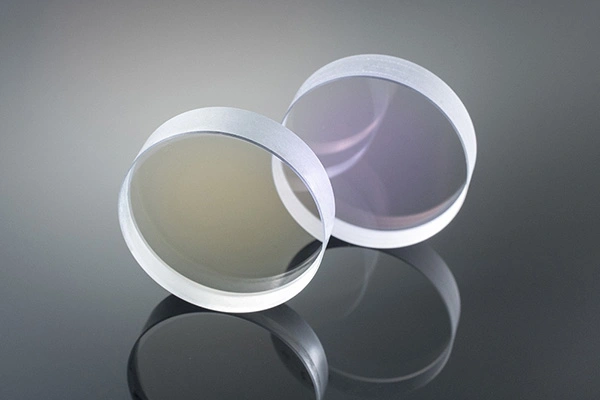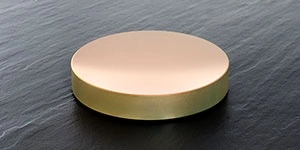High Power Mirrors
A high-power mirror must be able to withstand very high radiation powers and must not suffer any damage even during prolonged irradiation. The damage threshold LIDT is the benchmark for the resistance of the optics.
LIDT
LIDT is dependent on numerous parameters. Both layer properties (e.g. thermal properties, cleanliness, band gap) and substrate properties (e.g. material, surface quality) must be matched to the application parameters (e.g. wavelength, pulse duration, repetition rates, beam diameter, vacuum vs. atmosphere composition).
In the laser process, optics are affected by three dominant destruction mechanisms:
- cw – ns → thermal destruction due to absorption within the coating material.
- ns – ~20 ps → local heating due to absorption at defects.
- ~20 ps – fs and shorter → destruction by ionization effects.
We produce optics with very high destruction thresholds. Confirmed destruction thresholds of selected LAYERTEC optics are summarized in this technical report.
Turning Mirrors
Deflection mirrors specifically change the direction of the incident light. By selecting the coating, it is possible to adjust the reflectance of the mirror for a specific wavelength range and a specific angle of incidence. In addition, the mirror can be optimized for a direction of oscillation (polarization) and for high destruction thresholds.
LAYERTEC produces deflection mirrors for almost all angles of incidence and polarization types, either as a Bragg mirror optimized for one wavelength or as a broadband mirror. Depending on the requirements, for example, adaptation for high laser powers and/or short pulses is possible. In addition, the coatings can be calculated for lowest losses at maximum reflection or for a defined residual transmission.
Resonator Mirrors
A laser resonator is the core of a laser. The laser beam is generated in it. It consists of a fully reflecting and a partially reflecting mirror. Between them there is the active laser medium, which is excited by a pump mechanism.
The end mirror reflects light at almost 100 %. The output mirror has a lower defined reflectance and discharges the laser beam from the resonator. If the end mirror also functions as a coupling mirror, it also has an anti-reflective layer to let in the pump radiation.
LAYERTEC produces resonator mirrors for all lasers in the spectral range 130 nm – 7 µm. Depending on the laser type, material combinations and design structures proven over many years are used. In addition to the online shop assortment, individual special mirrors are manufactured according to customer requirements.
With sputtered mirrors, for example, power control in the resonator is possible independent of polarization. A defined residual transmission is used for this purpose. Special cover layers often have to be used to ensure vacuum suitability or UV stability.
By combining extremely well-polished substrates with sputtered coatings, we achieve very high reflection values (depending on wavelength and surface quality up to a maximum of 99.999 %), so that even weak laser lines can be excited.
Scanning Mirrors
Scanner mirrors are used in laser material processing for fast and flexible movement of the laser beam over the workpiece. They are usually milled out in the form of a sheet on their rear side. Due to this special design they are very thin and light in order to realize fast changes of direction.
Scanner mirrors are an established part of the LAYERTEC product range. The layer designs developed for this purpose offer both high performance stability and the necessary angular invariance of the reflectance. Especially the combination of a metal base mirror with a dielectric layer to increase the reflectance for the power laser allows direct imaging in the area of the processing zone.
Excimer Mirrors
When lasers are used in the UV range (excimer lasers), the optics are exposed to very high energies. In addition, excimer lasers run in pulsed mode and generate extremely short pulses with high peak intensities. For this reason, excimer optics must have high damage thresholds and be durable. Excimer lasers are gas lasers and are often operated with fluorine. If an optic exposed to the process gas, the substrate and coatings must also be based on fluorine, otherwise they would dissolve.
LAYERTEC produces optics for all excimer lasers (F2 laser 157 nm, ArF laser 193 nm, KrF laser 248 nm, XeCl laser 308 nm, XeF laser 351 nm). Resonator mirrors and output coupling mirrors for fluorine-based lasers consist of CaF2 or MgF2 substrates with fluoride coatings and can also be used in direct contact with the laser gas. Output coupling mirrors are typically offered with reflectivity up to R = 50 %. The specified reflectance is achieved with an accuracy of ±3 %.
Deflection mirrors for 157 nm and 193 nm are also based on fluoride layer systems on CaF2 substrates. This guarantees a high damage threshold and a long lifetime. Deflection mirrors for wavelengths from 248 nm consist of UV-compatible oxide layer systems on quartz glass substrates. Beam delivery optics can be designed for any angle of incidence. Deflection mirrors for 45° angles of incidence are available as standard components.
MIR Mirrors
MIR mirrors are suitable for laser radiation in the mid-infrared range (1.5 - 8 µm). This radiation is particularly well absorbed by hydrocarbons and water. It is primarily used in medical applications and plastics processing.
On the one hand, Wavelengths in the MIR range are generated by direct laser excitations at wavelengths of about 2 µm (Ho:YAG laser, Tm:YAG laser) and 3 µm (Er:YAG laser). On the other hand, they can be generated by optical parametric frequency conversion (periodically poled lithium niobate) for which there is no direct laser transition. The emission range of such optical-parametric oscillators extends to wavelengths of about 8 µm.
LAYERTEC produces a range of reflecting and transmitting optical components for the MIR range. Standard substrates like fused silica as well as standard coating materials partly show high absorption in this wavelength range. To cover broader wavelength ranges, the coating designs are specially configured.
Address
LAYERTEC GmbH
Ernst-Abbe-Weg 1
99441 Mellingen
Germany
International Sales
US Sales Office
Social Media
© 2024 | LAYERTEC GmbH

